Upland and Coastal Habitats
Dry Prairie, Pine Flatwoods, Rockland, Sand Pine and Rosemary Scrub, Sandhill, Coastal Dune, Coastal Scrub, Hammocks
A habitat is the environment where a plant or animal naturally lives or inhabits, this is where it has everything it needs to survive and reproduce, an organism's habitat includes living things (biotic) such as other plants or animals and non-living (abiotic) things - the air, sand, water, rocks all are important pieces of a habitat. The name of a particular type of habitat may reflect the dominant plant species present, or refer to prominate geological features or a combination of both. Pine flat-woods, cypress swamp, and depression marsh are good examples of this naming process.
Florida has 81 separate and distinct plant and animal communities divided into the following classifications with the indicated number of sub-classes - Hardwood Forested Uplands (5), High Pine & Scrub (4), Pine Flatwoods & Dry Prairie (5), Coastal Uplands (6) , Sinkhole & Outcrop Communities (4), Freshwater Non-forested Wetlands (11), Freshwater Forested Wetlands (8), Marine & Estuarine Vegetated Wetlands (3), Ponds & Lakes (9), Rivers & Streams (4), Subterranean (2) Marine & Estuarine (7).
( Source - Florida Natural Areas Inventory (FNAI) 2010 ) The FNAI website has a complete descriptive list of all the subdivisions of the classifications listed above in PDF format, available at - FNAI.org.
Fire is a critical component in the continuity of many Florida's habitat types, Oak scrub, Sand Pine and Rosemary Scrub, Pine Flatwoods, even wetlands benefit from the occasional fire. Without fire, dense undergrowth combined with the accumulation of leaf litter, pine needles and deadwood prevents seeds from germinating and getting enough light, air and water to survive. Upland habitats have a natural fire cycle that ranges from 1-2 years for dry prairies to as long as 20-80 years for sand pine/Florida rosemary scrub.
Pine Flatwoods
Forested areas with a canopy composed of one or more species of pine (Pinus).
Pine Flatwoods are perhaps the most widespread habitat in Florida. Flatwoods have a topography that is low and as the name states - relatively flat, with sandy acidic soil over an underlying layer of hardpan, a term used to descibe a compacted layer organic deposits or a mixture of sand and carbonate minerals called "marl" or shell and rock.
The layer of hardpan impedes the drainage of rainfall and during periods of heavy rain this results in flooding, as the water slowly runs off it collects in shallow depressions forming temporary ponds that may last from days to months at a time, some stay moist all year. These are often a refuge for various reptiles, amphibians, crustations, insects and assorted plant life that stands out from the surrounding landscape.
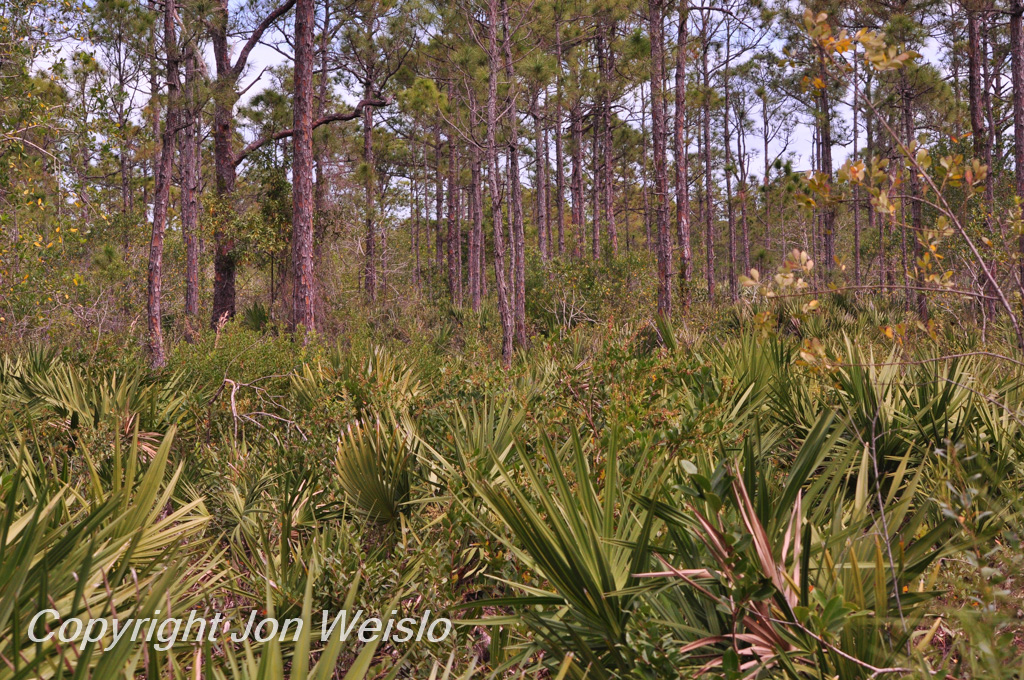
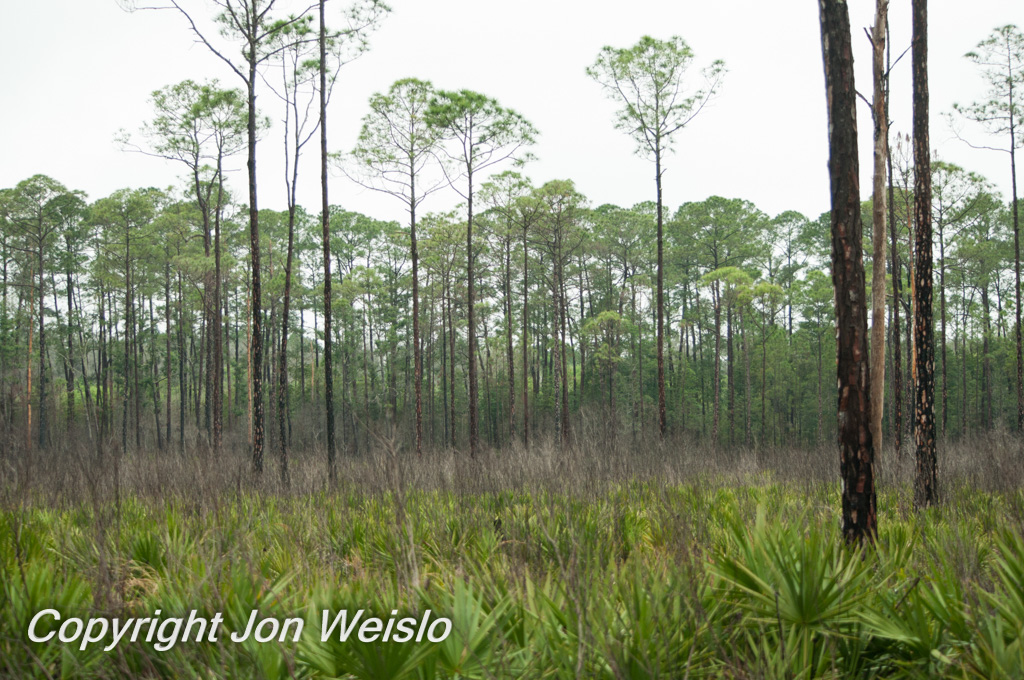
Successional Habitats
These are progressive habitat changes that take place after a catastrophic fire, flood, storm or logging operation removes the tree canopy. Pioneer species such as the small herbaceous plants and grasses regrow from the roots or sprout from seeds, they produce flowers and fruit relatively quickly and begin the process. Fast growing sub-shrubs and shrubs also begin growing back. Many of these types of plants have evolved with the ability to sprout quickly from their roots after their above ground parts are destroyed.
The plants themselves, as well as flowers, fruit and seeds from them provide food for pollinating insects like bees, wasps and butterflies, Gopher tortoise, birds, small rodents drop seeds and contribute to the process, other small animals soon take up residence, in turn attracting larger predatory species, as tree seedlings regrow and mature the process is completed with a mature ecosystem once again. Frequent fires interrupt this process of regrowth, thus preventing a tree canopy from forming and turning a Dry Prairie or Scrub habitat in a forest.
Dry Prairie
Large areas of treeless, native grass or shrub lands on dry, flat terrain which are subject to fires every 1-2 years. Although classified as a Dry Prairie, the sandy, acidic soils often have a hard-pan substrate which impedes drainage resulting in periodic short term flooding during the rainy season.
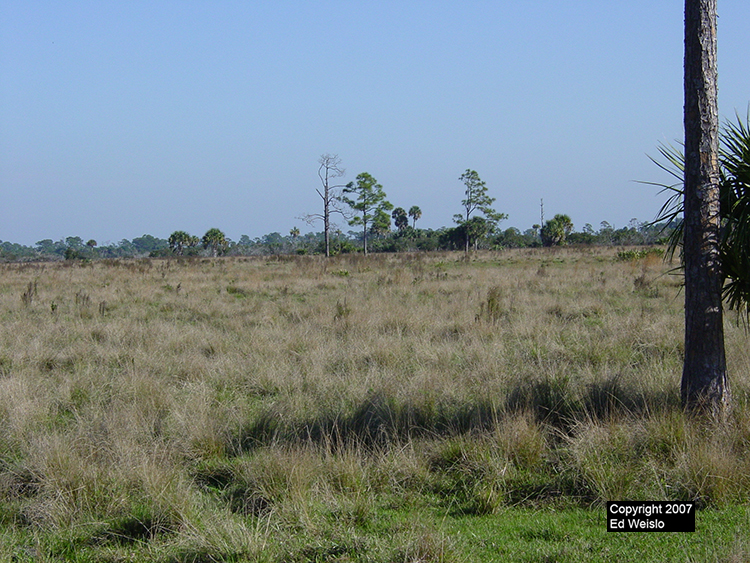
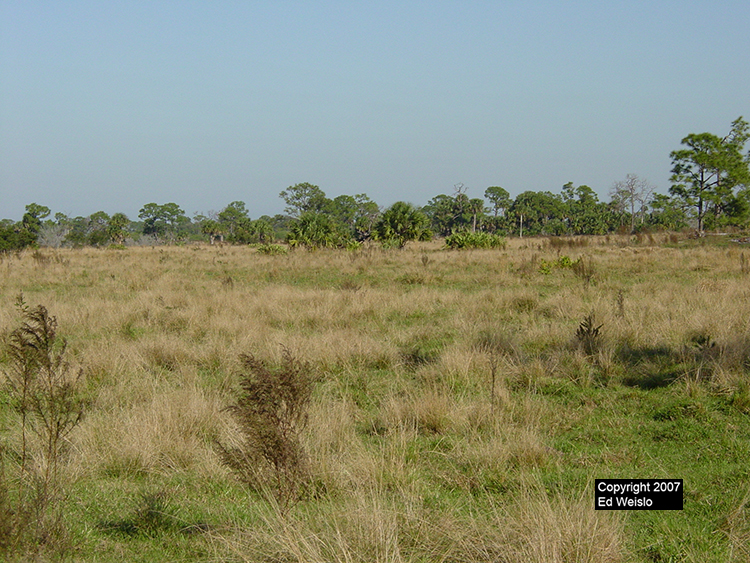
Small depression marshes, creeks and the occasional ephemeral ponds within the prairie also create an "Eco-tone" type of habitat resulting in a mix of plants from the two adjoining ecosystems sometimes including plants from neither. Many insects and small invertebrates, mammals and reptiles either reside here or visit these places regularly.
Vegetation consists mostly of grasses, sedges, herbs, and shrubs. Scattered pines, Sabal palms, Palmetto, Wax myrtle, Fetter-bush, Tarflower, Gallberry. Frequent fire prevent trees and shrubs from overtaking and dominating this type of habitat. Dry prairie has become increasing uncommon because it is more easily developed for housing or commercial projects.
Sand Pine and Rosemary Scrub
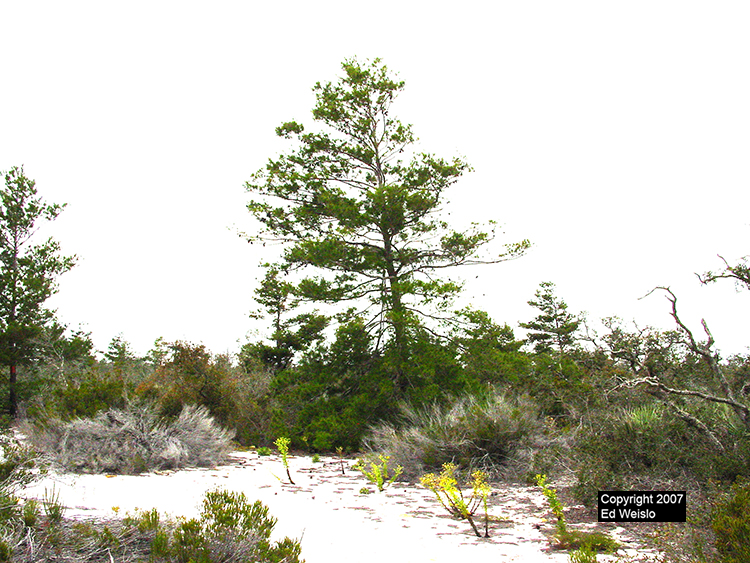
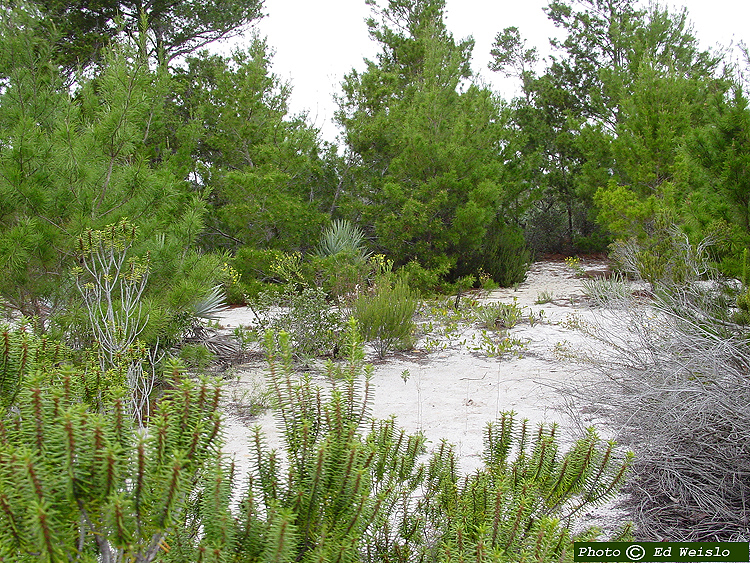
When sea levels were much higher than that of present day, sand ridges formed from deposited sediment washed to the sea from eroding mountains to the north. As the sea level receded these deposits became islands.
Plants colonized these islands, later as sea levels dropped further and the Florida peninsula emerged from the ocean these islands became the current day Florida Ridges
Since development has overtaken or fragmented much of the original scrub habitat, many of the plants and animals endemic to it are considered endangered, threatened or rare.
The two largest areas of remaining scrub type of habitats are found on The Atlantic Coastal Ridge, which runs parallel and in close proximity to the east coast of Florida from northern St. Lucie county south to Miami-Dade and Monroe counties, ranges in height from 10 feet to well over 50 feet above sea level and the Lake Wales Ridge which extends from Lake and Orange counties in the north, south through Highlands county and ranges in height from 70 feet to over 300 feet above sea level at its highest point.
Some of the plants associated with Florida scrub include Chapmans oak, Sand Pine, Myrtle Oak, Scrub Oak, Scrub Holly, Florida Rosemary, Lichens and Mints.
Oak Scrub
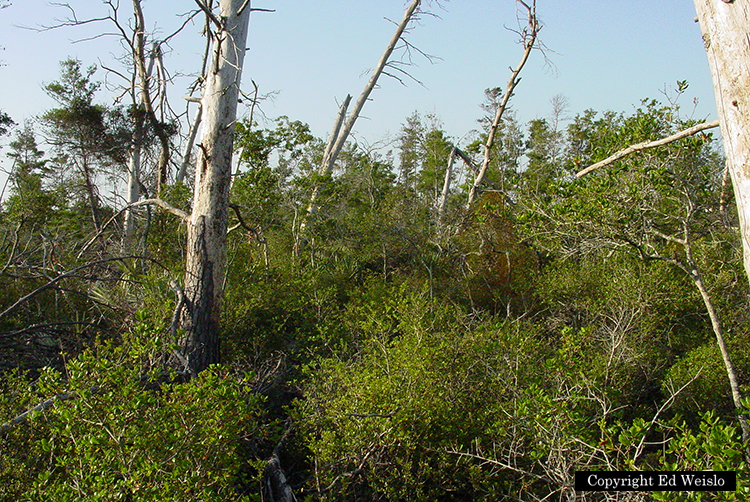
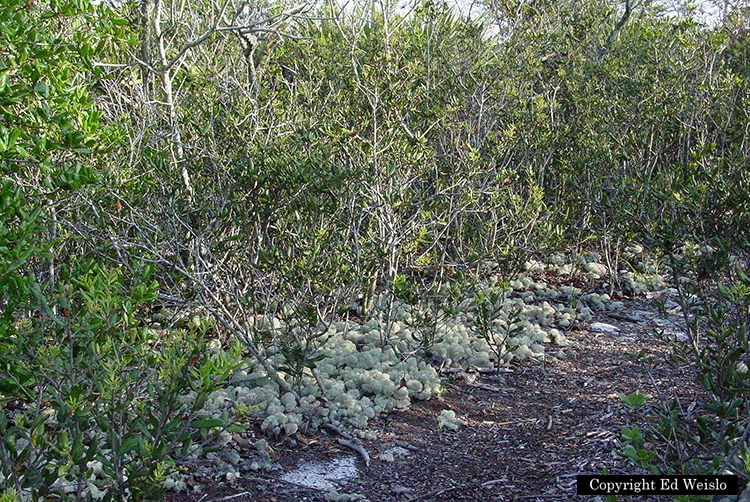
Found on deep, white sands where fire or clear cutting has removed the pine over-story. Common plants include Myrtle Oak, Chapman's Oak, Dwarf Live Oak, Scrub Holly, Hog Plum, Scrub Hickory, Florida Rosemary, Gopher Apple and Saw Palmetto. Areas of open white sand are frequent in this type of habitat.
Sandhill
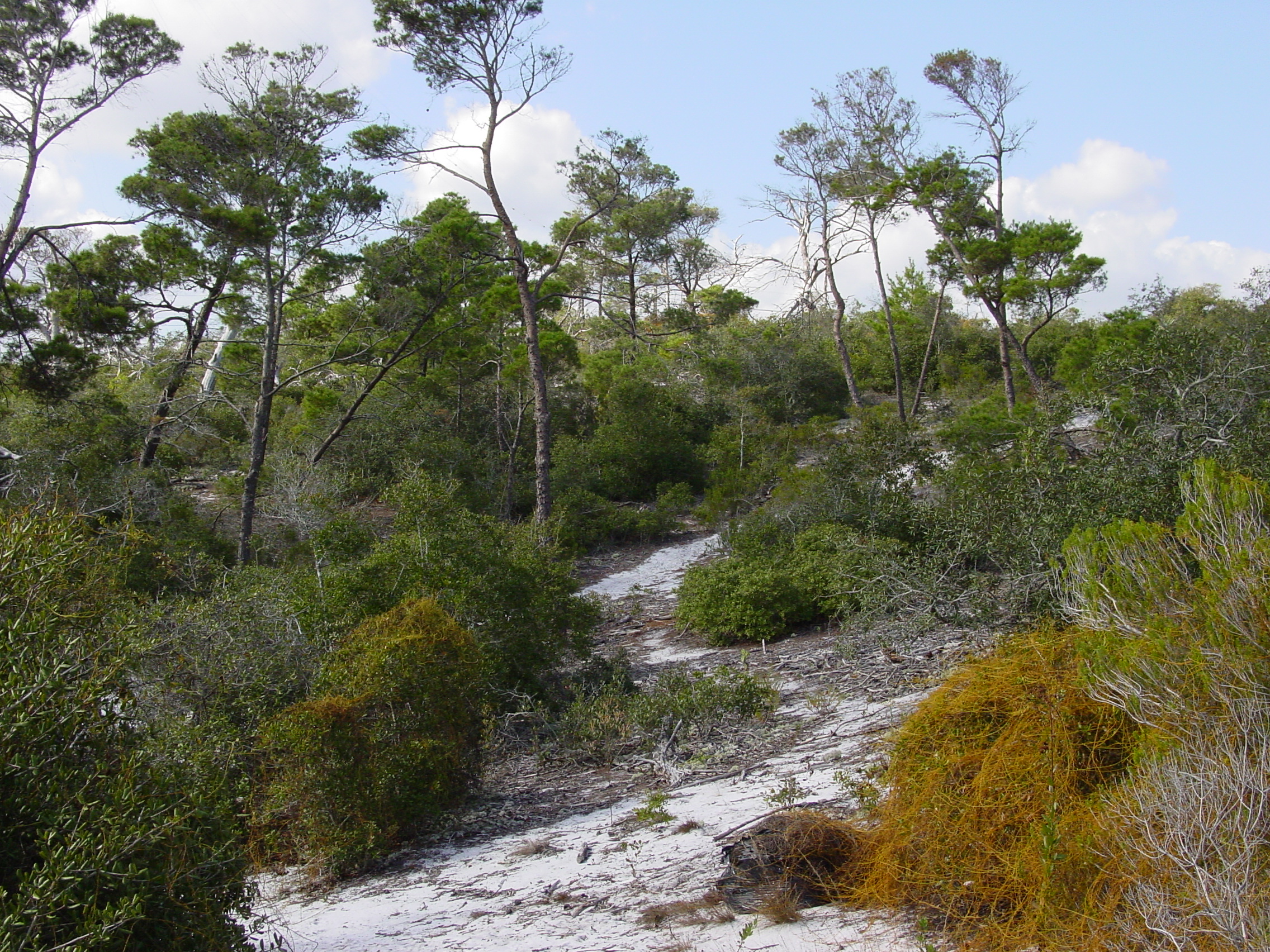
Areas of rolling terrain on deep, well-drained, white to yellow, sterile sands. A Xeric plant community that depends on fire to maintain it's ecology. Sand Pine, Long-leaf Pine, Turkey Oak, Bluejack Oak, Wire Grass, Partridge Pea, Beggars Tick, Milk Pea, Queen's delight, herbaceous plants and grasses.
Coastal Strand / Dunes
Sandy, well drained soils along the coastline. From the open sands of the upper beach and the dune lines - inland to where more highly developed plant communities are found.
Beach morning glory, Railroad vine, Sea Oats, Saw Palmetto, Spanish Bayonet, Prickly Pear cactus, Sea grape, Cocoplum, Grey Nicker
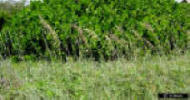
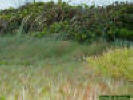
Pictures - Dune & Coastal Strand plants withstand a harsh environment. Sea Grape, Sea Oats, Coastal Sea Rocket, Railroad Vine, Bitter Panicgrass are some of the more common ones. They help stabilize the shifting sands and reduce erosion from wind and waves.
Coastal Scrub
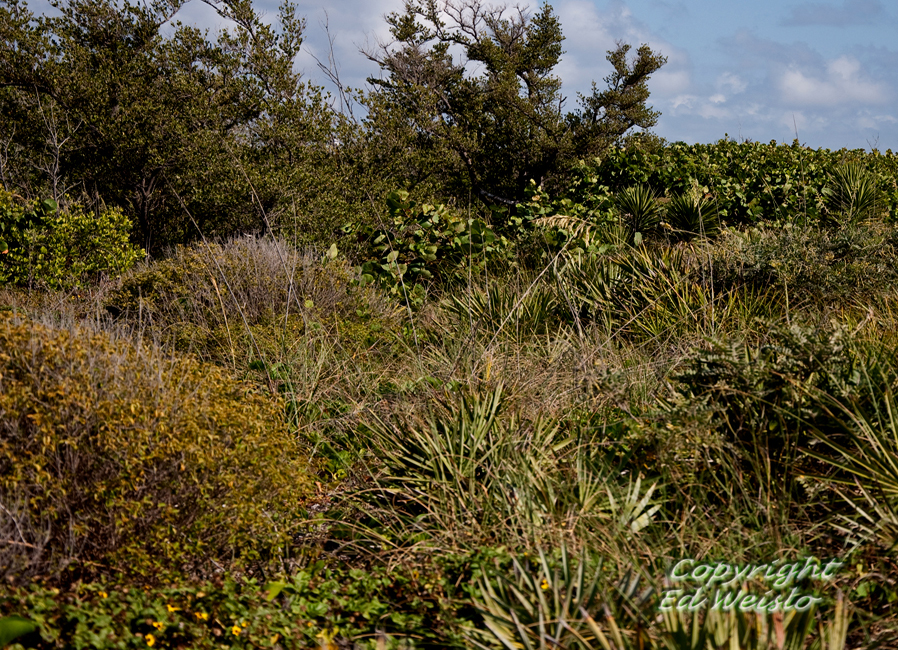
Florida coastal scrub habitat occurs in scattered locations on barrier islands, dunes and sand ridges on both the east and west coasts. This type of habitat is positioned between the dune line on the ocean side and maritime forest or mangroves on the landward side, it is characterized by the absence of a tree canopy with areas of open sand, dominate plants are low growing shrubs and herbs.
Plant life of Coastal scrub includes Saw & Bluestem palmetto, Seagrape, Prickly-pear cactus, Cocoplum, Shrub Verbena, Beach sunflower, Coontie, Nickerbean, Yucca.
Tropical Hardwood Hammock
Found near both the east and west coasts, on tree islands throughout the Everglades and Big Cypress Preserve, the Florida Keys, the pine rocklands, marl prairies, and shell mounds of the southern tip of Florida.
Closed canopy of tropical broadleaved evergreen and semi-deciduous species including Strangler fig, Gumbo-Limbo, Live-Oak, Mastic, Bustic, Lancewood, Ironwood, Poisonwood, Pigeon Plum, Cocoplum, Jamaica Dogwood, Bahama Lysiloma, Mahogany, Thatch Palms and Manchineel.
Hardwood hammocks provide habitat for a variety of epiphytes or "air plants". Native orchids, ferns, mosses and assorted bromeliads. Attached to the bark of the host tree and acquiring nutrients from rain water, dust in the air and debris that collects on bark of the host tree, some have specialized leaves that absorb rain water and mist directly - these plants are not parasitic and usually do not harm the host tree.
Sable Palm Hammock
Coastal Strand, flatwoods, bottom land forests, prairies, floodplains, margins of marshes and other wetlands.
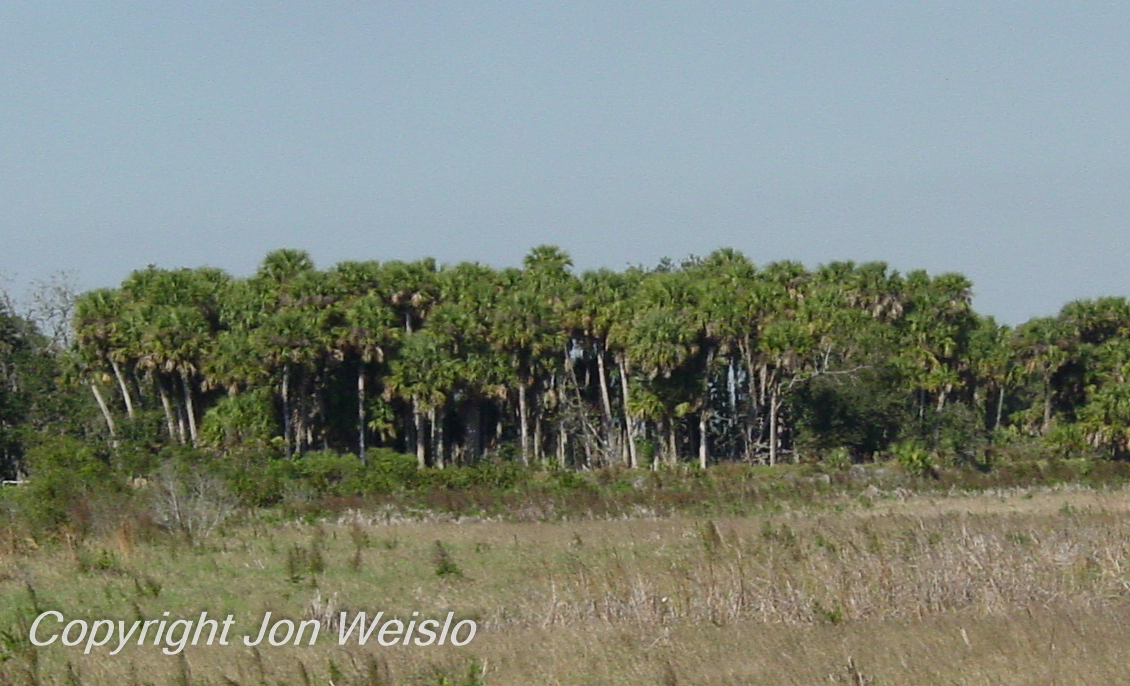
Under-story plants include vines, grasses, ferns and various herbaceous plants, what plants are present is determined primarily by the type of soil and available moisture.
Pine Rockland
Found on the Miami Ridge extending to the southwest in to the Florida Keys, also occurs on the southwest side of the state in the Big Cypress swamp area. This habitat is based on a limestone substrate covered with a thin layer of sand and organic detritus outcroppings of limestone
Characteristic plant species are South Florida slash pine, Christmas berry, Maidenhair pine-land fern, Florida silver palm and Florida white-top sedge. Pine rockland are home to many rare and endemic plants, including 18 that are endemic to this habitat. South Florida slash pine canopy that is open and allows ample light to the ground to support over 100 species of palms and hardwoods as well as a large variety of herbaceous plants and ferns. These are mostly scattered in patches, dependent on the amour of soil present.